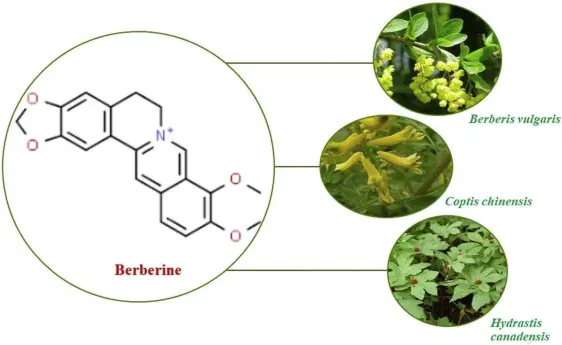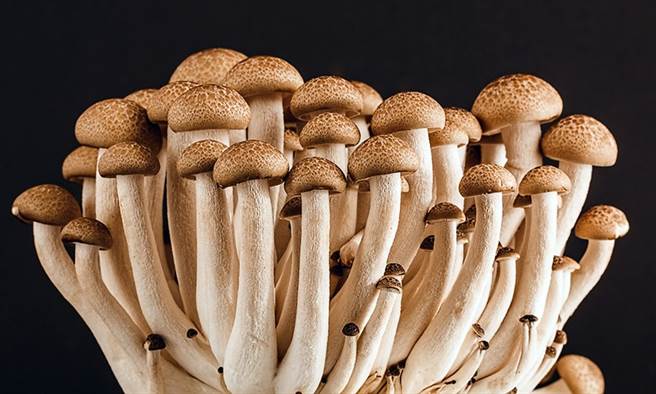Can Eating Mushrooms Extend Lifespan by 20%? Cell Study Unveils Ergothioneine’s Remarkable Anti-Aging Power via NAD+ Boosting
While antioxidants dominate the anti-aging scene, ergothioneine (ET)—a sulfur-containing amino acid—has emerged as a dual-purpose marvel, captivating both skincare enthusiasts and longevity researchers. Recently, a groundbreaking study in Cell Metabolism revealed that ET’s benefits go far beyond its antioxidant prowess: it boosts NAD+ levels by twofold, rivaling NMN, a popular longevity compound[1].
Ergothioneine: From “Longevity Vitamin” to NAD+ Enhancer
Discovered in ergot fungi and abundant in mushrooms like shiitake and porcini, ET boasts a higher redox potential than glutathione and vitamin E. Dubbed a “longevity vitamin” by biochemist Bruce Ames[2], ET is now linked to a novel mechanism involving mitochondrial rejuvenation.
Key Findings from the Study
-
20% Lifespan Extension in Worms
Administering 5mM ET to C. elegans nematodes extended their median lifespan by 20%, with effects persisting even at 450μM doses.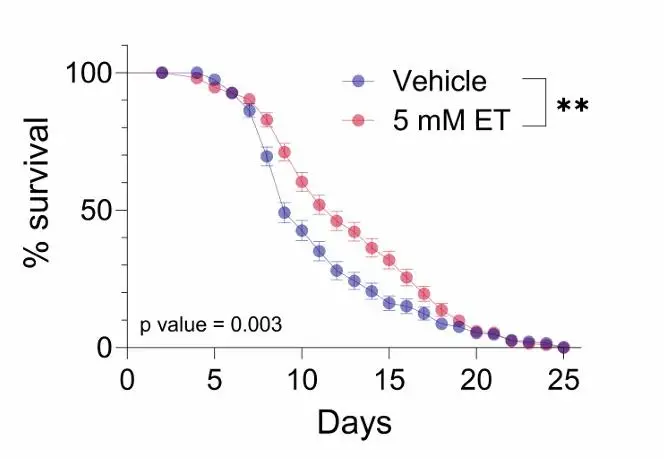
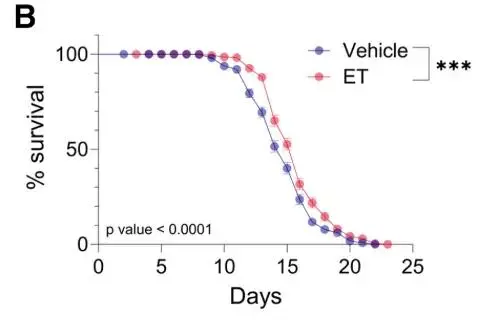
-
Enhanced Physical Performance
ET-treated worms exhibited significantly higher tail-thrashing activity compared to controls, reflecting improved vitality.I

-
Stress Resistance Boost
Survival rates surged in ET-fed worms exposed to hydrogen peroxide, paraquat, arsenate, and heat stress.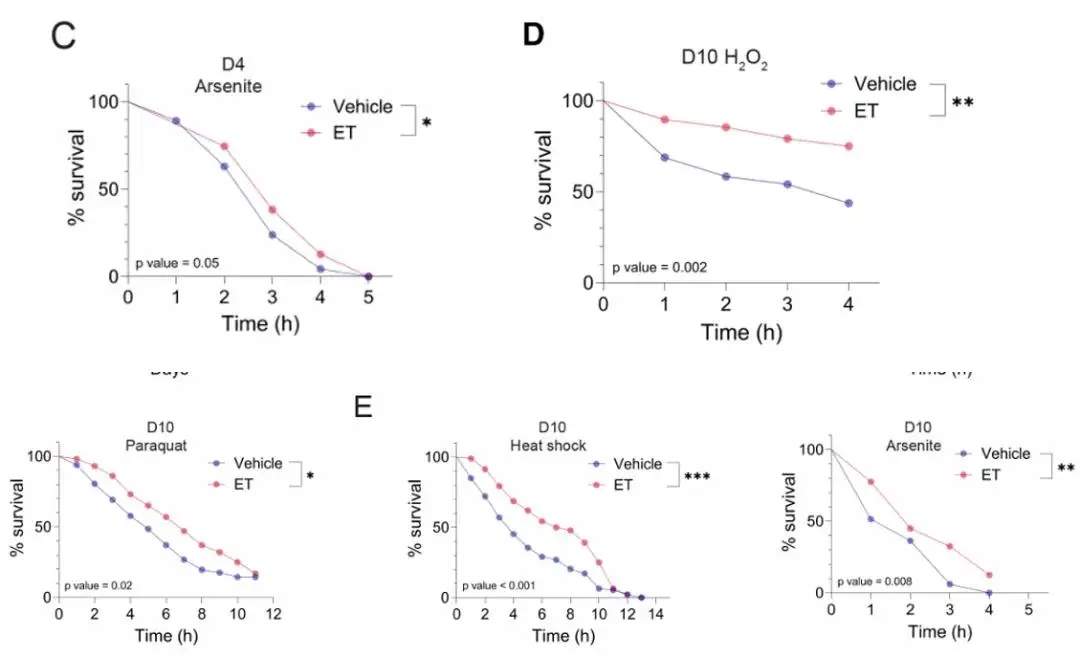
-
Reduced Aging Biomarkers
ET lowered lipofuscin (“age pigments”) and lipid accumulation in aged worms.
-
Mitochondrial Rejuvenation
ET preserved youthful, filamentous mitochondrial structures, countering age-related fragmentation.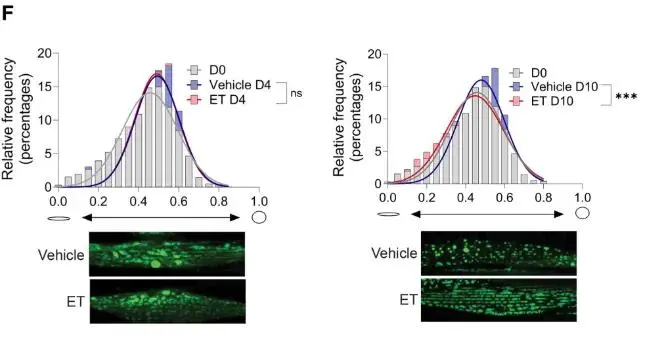
Unmasking ET’s Dual Mechanism
The study uncovered ET’s role in increasing NAD+—a critical molecule for energy metabolism and DNA repair that declines with age. Rats fed ET for three weeks showed doubled NAD+ levels in muscles, leading to enhanced endurance and delayed fatigue. Notably, ET outperformed NMN and other NAD+ precursors in aged models.
How It Works:
- ET mimics a substrate for the enzyme cystathionine γ-lyase (CSE), generating hydrogen sulfide (H₂S).
- H₂S triggers protein persulfidation (PSSH), activating 300+ proteins involved in oxidative defense and energy metabolism.
- Specifically, ET sulfhydrates cysteine-243 on cGPDH, boosting enzyme activity and NAD+ production.
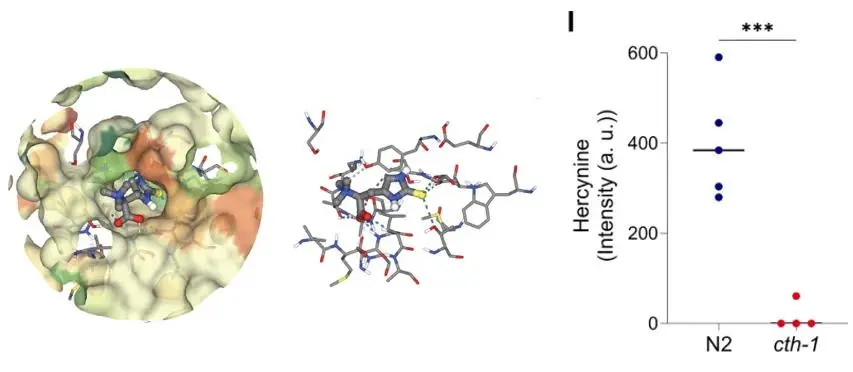
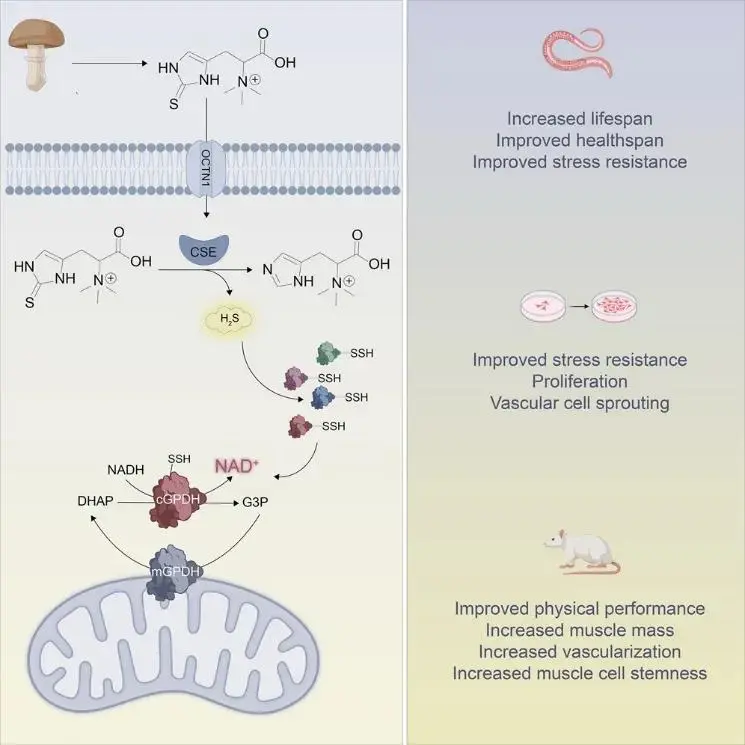
Dietary Sources vs. Supplements
Mushrooms (oyster, king trumpet) are the richest ET sources, followed by meats and oats. However, consuming 250g of mushrooms daily to meet the 30mg ET limit poses a risk of excessive purine intake. Supplements or topical products offer safer alternatives.
Safety and Future Prospects
Deemed safe by the European Food Safety Authority, ET is non-toxic even for pregnant women and children. While NMN remains a contender, ET’s dual antioxidant and NAD+-boosting capabilities position it as a versatile anti-aging agent.
References
1. Author et al. (2025). *Cell Metabolism*.
2. Ames BN. (Year). "Longevity Vitamins". *Journal Name*.
3. European Food Safety Authority Report.

